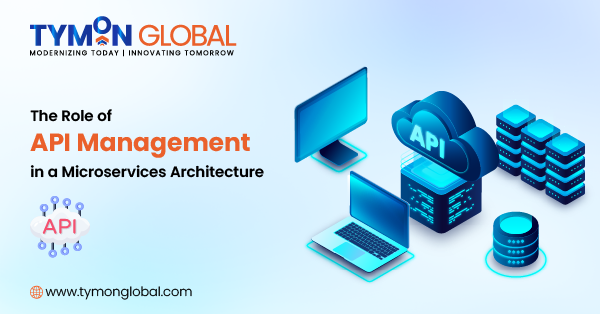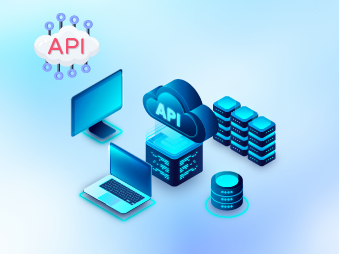
The present trend in application design is toward microservices architecture to enhance scalability, flexibility, and efficiency. On the other hand, microservices bring the challenge of communication management between these independent services. It is here that API management comes into play. API management in microservices provides security, monitoring, versioning, and control for smooth interaction between microservices.
This blog goes on to describe the role of API management within the microservices architecture, its major components, as well as some best practices for implementation.
What is Microservices Architecture?
Microservices architecture is a design approach where an application is built as a collection of small, independently deployable services. Each service represents a specific business capability and can be developed, deployed, and scaled independently.
By breaking applications into smaller parts, businesses can use modularity, rapid deployment, and high availability. These individual services often rely on APIs to communicate effectively, which is why API management in microservices has become a core focus for developers and DevOps teams.
Why are APIs Important in Microservices?
In a system of microservices, APIs may be understood as the connective link holding together distributed services. Working with mutual security and documentation, each microservice needs to send and receive data in a trustworthy manner, which is where solid API strategies come into play.
With the ever-increasing need for custom API development services, organizations are looking for solutions that streamline communication and ensure flexibility across tech stacks. Proper design, documentation, and monitoring of these APIs are keys to long-term success.
What is API Management?
API Management refers to the centralized process of designing, publishing, securing, monitoring, and analyzing APIs. It brings structure to the often complex world of APIs, especially in distributed microservices environments.
In the context of microservices, API management in microservices allows developers to expose, manage, and monitor APIs at scale. From securing access with tokens to rate-limiting requests, API management acts as the backbone of efficient service communication.
Key Functions of API Management in Microservices
Modern systems depend on an array of tools and functions to ensure that APIs perform optimally. These include:
1. API Gateway
In a microservices architecture, the microservices API gateway functions as the main entry point for client requests. It routes traffic, enforces policies, and aggregates multiple service calls.
2. Traffic Management
Tools provide control over how requests are routed and how much traffic each service can handle, which is essential for performance tuning and uptime.
3. Authentication & Authorization
Securing services is non-negotiable. Features like OAuth, JWT, and API key authentication are foundational to securing and scaling microservices APIs effectively.
4. Analytics and Monitoring
With real-time data on usage patterns, error rates, and performance bottlenecks, businesses can make informed decisions and proactively resolve issues.
5. API Lifecycle Management
Managing APIs across multiple versions and environments ensures consistent functionality without disrupting service consumers.
Top Benefits of API Management for Microservices
Microservices thrive on efficiency, but without proper API management, they can become unmanageable. API management streamlines operations, enhances security, and optimizes system performance. Here are its top benefits:
- Security and Access Control: Ensures proper control for who can access what, making API management in microservices a strategic asset for governance.
- Scalability and Performance: Whether you’re scaling vertically or horizontally, well-managed APIs help distribute workloads efficiently, especially when supported by the best API integration solutions.
- Faster Development Cycles: Reusable and composable services lead to quicker deployment. Teams using custom API development services can improve step by step faster while maintaining consistency.
- Operational Visibility: Monitoring traffic, usage, and error rates allows businesses to optimize system health and improve customer experience.
Best Practices for Implementing API Management
Successful API management ensures efficient communication between microservices while maintaining security and scalability. Following these best practices will help businesses optimize their API strategies.
- Centralized API Controls: Use a management platform to control policies, users, and documentation.
- Prioritize Security from the Start: Apply encryption and authentication to every API.
- Monitor and Analyze Usage: Use analytics dashboards to gain insight into performance and usage.
- Version Control Your APIs: Maintain backward compatibility as your services evolve.
- Document Everything Clearly: Good documentation is crucial for internal teams and external partners alike.
These steps form the core of API management in microservices, allowing businesses to adapt quickly and scale without risking performance or security.
Bottom Line
As businesses move to cloud-based systems and distributed environments, API management in microservices becomes extremely important. Without proper governance, performance, and security controls, even the best-designed microservices can fall short.
Whether you’re investing in API development services or seeking the key API integration solutions to support your digital transformation, choosing the right API management strategy will make or break your scalability. TymonGlobal helps enterprises with end-to-end microservices support and advanced API management capabilities designed for performance, security, and long-term success.
FAQs
What is the role of an API gateway in microservices?
It acts as the single access point for all service requests, handling routing, security, and transformation.
Can you run microservices without API management?
You can, but you risk issues like inefficient communication, poor security, and lack of scalability.
What’s the best way to secure APIs in microservices?
Implement authentication tokens, rate limiting, and SSL encryption to secure and scale your APIs.
How do I choose an API management tool?
Consider your architecture, traffic volume, budget, and integration capabilities before selecting a platform.

